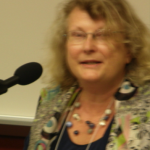 Sylvie Mathé, Professor of American Literature at the Université de Provence, writes that the paper she presented on “Updike’s Lifetime Homage to Pennsylvania” at the Alvernia conference was reformatted as “In Memoriam,” an homage that was recently published in the online journal Transatlantica. Here’s the link to the full-text document.
Sylvie Mathé, Professor of American Literature at the Université de Provence, writes that the paper she presented on “Updike’s Lifetime Homage to Pennsylvania” at the Alvernia conference was reformatted as “In Memoriam,” an homage that was recently published in the online journal Transatlantica. Here’s the link to the full-text document.
Author Archives: James Plath
Larry C. Randen Collection to be delivered May 6
The David Silcox/Thelma Lewis Collection was delivered to The John Updike Society Archive at Alvernia University in December, 2010, and on May 6, 2011 The Larry C. Randen Collection will be deposited with Alvernia archivist Eugene Mitchell, whom members met at the October conference.
According to Randen, the collection consists of “twelve Banker’s Boxes, four of which are books by and about Updike, plus movie DVDs, videos, CDs, and cassettes. The other eight boxes contain 24 three-inch and four-inch 3-ring notebooks with plastic protector sheets that contain reviews, articles, essays, etc. by and about Updike,” with a CD provided that contains much of the material.
Randen added, “There is a wealth of material in the collection that also includes a lot of photographs of Updike published after his death which I’ve printed out on glossy photographic paper. I have most of the caricatures of Updike done by David Levine (1926-2009) for The New York Review of Books, plus other comic likenesses done by Ken Fallin, Zach Trenholm, and other artists. I believe any interested inquirer paging through the file books will be in for some real surprises about the breadth of information gathered in them.”
Randen said he collected the material along with David Lull as co-researchers for The Centaurian website operated by James Yerkes. “I’m truly grateful my collection will join The David Silcox/Thelma Lewis Collection and the Rachael C. Burchard Papers as part of The John Updike Society Archives and other collections of Updike materials this concentration might attract in the future. It’s been a source of great personal satisfaction and enrichment to discover and preserve these literary artifacts for posterity,” Randen said.
State of the Union at the University of Limmerick
The syllabus for a third-year course (EH4016) on “State of the Union: American Literature since 1890” being taught at the University of Limmerick (Ireland) requires students to read five novels. One of them is John Updike’s Rabbit, Run. The others are Don DeLillo’s White Noise, F. Scott Fitzgerald’s The Great Gatsby, Toni Morrison’s Song of Solomon, and John Steinbeck’s Of Mice and Men. No Hemingway and Faulkner, you may ask? Hemingway’s “Hills Like White Elephants” did make the syllabus, as did Faulkner’s “A Rose for Emily,” along with short stories from James Baldwin, Flannery O’Connor, and Raymond Carver, and poems from Allen Ginsberg and Harlem Renaissance poets.
Tom Sleigh receives the first John Updike Award
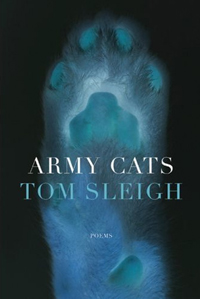 The American Academy of Arts and Letters announced on March 22, 2011 the winners of their annual literature awards—including the inaugural John Updike Award, a $20,000 prize established by Mrs. John Updike in memory of her husband. The award will be given biennially to a writer “in mid-career who has demonstrated consistent excellence.” The Academy’s 250 members nominate candidates, and a rotating committee of writers selects the winners. This year’s committee members were Paula Fox, Philip Levine, Romulus Linney, Alison Lurie, and Joy Williams.
The American Academy of Arts and Letters announced on March 22, 2011 the winners of their annual literature awards—including the inaugural John Updike Award, a $20,000 prize established by Mrs. John Updike in memory of her husband. The award will be given biennially to a writer “in mid-career who has demonstrated consistent excellence.” The Academy’s 250 members nominate candidates, and a rotating committee of writers selects the winners. This year’s committee members were Paula Fox, Philip Levine, Romulus Linney, Alison Lurie, and Joy Williams.
The committee selected Tom Sleigh, who teaches poetry at Hunter College, as the first John Updike Award recipient. Like Updike, Sleigh writes in multiple genres, but he is perhaps best known for his seven books of poetry and his plays, five of which have been produced. Sleigh publishes frequently in The New Yorker and has won numerous literary prizes, including the Kingsley Tufts Award for poetry (a $100,000 prize). Here’s a link to “Hunter-Gatherer,” which appeared in the September 17, 2009 New Yorker. His most recent collection is Army Cats: Poems (Graywolf Press, 2011).
Knopf provides details about Higher Gossip
The Knopf PR people may be on vacation, but we learned from bibliographers Michael Broomfield and Jack De Bellis’ Knopf contact that Higher Gossip is estimated at 512 pages—roughly the same size as Hugging the Shore—and it’s priced at $40. Christopher Carduff compiled and edited the volume, which is divided into five sections:
“Real Conversation” consists of two previously published personal essays, one previously published humorous piece, three previously published short fictions, and six poems (“The Lovelorn Astronomer,” “Basium XVI,” “Head of a Girl, at the Met,” “Cafeteria, Mass. General Hospital,” “An Hour Without Color,” and “Not Cancelled Yet.”
“Book Chat” includes three speeches (“Humor in Fiction,” “The Plight of the American Writer,” and “The Written Word”); tributes to Kierkegaard, Fitzgerald, Hemingway, Sissman, and Carver; three forewords/afterwords; and 15 book reviews.
“Gallery Tours” features 20 essays on art, and “Pet Topics” contains three previously published essays on science, six musings on Massachusetts (including “Harvard Square in the Fifties,” “Ipswich in the Seventies,” and “Memoirs of a Massachusetts Golfer”), and five post-Golf Dreams writings on golf.
“Table Talk” is the ephemeral category, including remarks made at book conventions, short musing, forewords, addresses, letters, prefaces, notes, and a humorous piece on “The original ending of Self-Consciousness.“
More “More Just Looking”: Updike as Art
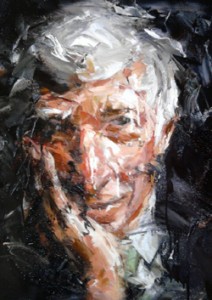 Member Andrew Moorhouse writes that for his 50th birthday he decided to treat himself and commissioned an artist friend to do a painting of John Updike.
Member Andrew Moorhouse writes that for his 50th birthday he decided to treat himself and commissioned an artist friend to do a painting of John Updike.
Scholars and avid readers will recognize the image from a Frank Capri photo that adorned the cover of James O. Yerkes’ critical anthology on John Updike and Religion: The Sense of the Sacred and the Motions of Grace (1999). But, of course, the artist took the image into the realm of expressionism.
It’s the third such painting we know of, and seems somehow fitting and full-circle, given how Updike was inspired by art.
Updike scholar George W. Hunt dies
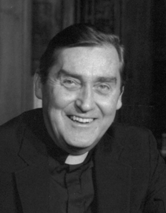 George W. Hunt, well known among Updike scholars for his seminal early monograph, John Updike and the Three Great Secret Things: Sex, Religion, and Art, died Friday, Feb. 25, 2011, of cancer. An obituary in America: The National Catholic Weekly reports that Hunt, 74, was editor of America from 1984-98 and a literary scholar who published on John Cheever as well.
George W. Hunt, well known among Updike scholars for his seminal early monograph, John Updike and the Three Great Secret Things: Sex, Religion, and Art, died Friday, Feb. 25, 2011, of cancer. An obituary in America: The National Catholic Weekly reports that Hunt, 74, was editor of America from 1984-98 and a literary scholar who published on John Cheever as well.
But to Updike scholars and aficionados he was one of the most astute critics among us. His 1980 book used, as a point of departure, Updike’s famous essay on “The Dogwood Tree: A Boyhood” (Assorted Prose, 1965) and examined how sex, religion, and art permeate and inform Updike’s work.
Panels set for ALA
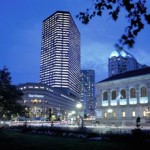 Richard Androne, of Albright College, has put together two panels for the American Literature Association conference in Boston May 26-29, and a general membership meeting will follow immediately after the second panel. Session times haven’t been alloted yet, but here are the panels:
Richard Androne, of Albright College, has put together two panels for the American Literature Association conference in Boston May 26-29, and a general membership meeting will follow immediately after the second panel. Session times haven’t been alloted yet, but here are the panels:
Inside the Space of John Updike’s Fiction (May 28, 12:30-1:50 p.m.)
Chair: Quentin Miller, Suffolk University
“Reading for the Sake of Seeing: Visual Representation of Form and Space in Updike’s Short Fiction,” Kangqin Li, University of Leicester, UK
“’People Like Themselves’: Class in John Updike’s Couples,” Richard Androne, Albright College
“Evil in Eastwick and Eden: John Updike’s Application of Karl Barth’s Doctrine of Nothingness,” John McTavish, independent scholar, Huntsville, Ontario
The Other John Updike: Poems, Essays, and Children’s Books (May 28, 2:00-3:20 p.m.)
Chair: Judith Newman, University of Nottingham
“’I’ve Grown to Love it Here’: John Updike’s Subversive Poetics,” Edward Allen, The University of South Dakota
“’Yes, But’: Updike Reviews Hemingway,” Peter Bailey, St. Lawrence University
“John Updike’s Children’s Books: Introducing The Archangel,” Brian Steffen, independent scholar, Oswego, New York
In addition, society president James Plath was invited to participate in a four-person roundtable on “Websites of American Author Societies: What Are Their Goals? Who Are They For?”
The conference will take place at The Westin Copley Place, 10 Huntington Ave., Boston, where the Society was launched two years ago. And the business meeting for the Society, to which all members are invited, is scheduled for Saturday, May 28, from 3:30-4:50 p.m. All participants must be registered for the conference, and details are available at the ALA link on the Society’s webpage left menu.
Persimmontree Magazine prints an Updike encounter
 Persimmontree Magazine has a regular section called “short takes,” in which writers share small, lyric essays and reminiscences on a topic, and member Jack De Bellis drew our attention to the fact that Volume 16 (Winter 2010-11) features “My Night with John Updike,” by Lynne Davis.
Persimmontree Magazine has a regular section called “short takes,” in which writers share small, lyric essays and reminiscences on a topic, and member Jack De Bellis drew our attention to the fact that Volume 16 (Winter 2010-11) features “My Night with John Updike,” by Lynne Davis.
She begins, “It’s not what you’re thinking. It’s not at all what you’re thinking.
“It started with a flyer in the mail room. On cream-colored paper, a man with a teacup. John Updike. He was coming to our rural Midwestern university.
“You could hear the whispers in the hall. ‘John Updike? The JohnUpdike? Why is he coming here?
“I fell in love with him when I was in college, when I read one of his stories in The New Yorker, ‘The Music School.’ His phrasing was lyrical, precise, so delicately balanced—like a Mozart piano concerto.”
To read more, follow this link to Persimmontree Magazine and scroll down for the rest of the story.
Updike’s debut as a literary character?
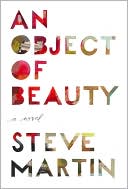 Brian Keener, author of John Updike’s Human Comedy: Comic Morality in The Centaur and the Rabbit Novels, writes that “our man John Updike has now made an appearance as a literary character. According to a book review of Steve Martin’s new novel, An Object of Beauty, in The New York Times on Nov. 26 (“Only Collect,” by Alexandra Jacobs), Updike appears “in the form of a stranger on a train” with the heroine addressing him, ‘Sit down, father figure.’ This development may open up a new vein of Updike scholarly investigation: John Updike as a literary character.”
Brian Keener, author of John Updike’s Human Comedy: Comic Morality in The Centaur and the Rabbit Novels, writes that “our man John Updike has now made an appearance as a literary character. According to a book review of Steve Martin’s new novel, An Object of Beauty, in The New York Times on Nov. 26 (“Only Collect,” by Alexandra Jacobs), Updike appears “in the form of a stranger on a train” with the heroine addressing him, ‘Sit down, father figure.’ This development may open up a new vein of Updike scholarly investigation: John Updike as a literary character.”
And to think that a comic actor may have started the ball rolling.
